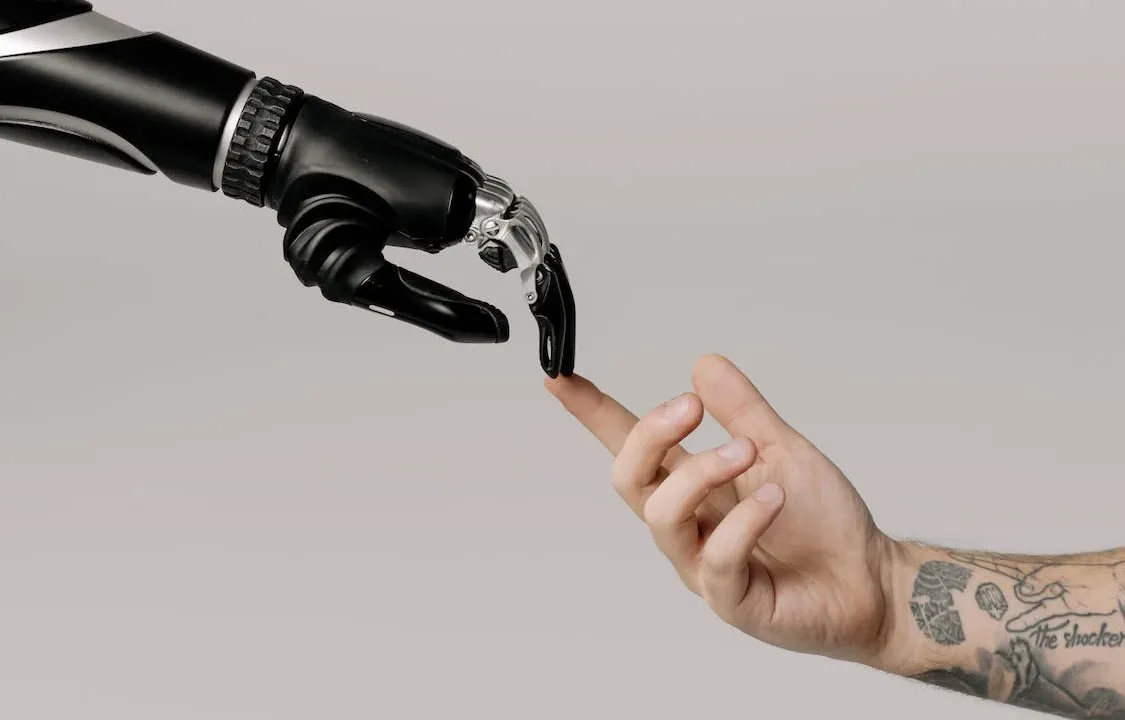
Artificial intelligence (AI) is rapidly evolving, and its capabilities are only going to increase in the next decade. This has the potential to bring about great benefits for humanity, such as solving complex problems, improving healthcare, and making our lives more efficient. However, there are also risks associated with AI, such as job displacement, social inequality, and even existential threats.
The Benefits of AI:
The potential benefits of AI are vast.
AI can be used to solve complex problems: that are beyond the capabilities of humans, such as climate change and cancer research. For example, AI is being used to develop new drugs and treatments for diseases, such as cancer and Alzheimer’s.
AI can be used to Improve the accuracy of medical diagnoses, and to personalize treatment plans for individual patients.
Improve healthcare by providing personalized treatment plans and diagnosing diseases earlier.
For example, AI-powered medical devices can be used to monitor patients’ vital signs and detect potential problems early on.
AI can be used to Develop new surgical techniques that are less invasive and more precise:
AI can be used to Make our lives more efficient : by automating tasks such as driving, customer service, and manufacturing.
For example, AI-powered self-driving cars are being developed that could revolutionize transportation.
AI is also being used to automate customer service tasks, such as answering questions and resolving complaints.
In the field of manufacturing, AI is being used to automate tasks such as welding and assembly, which can lead to increased productivity and efficiency.
AI can be used to Create new industries and jobs, such as in the field of robotics.
For example, AI-powered robots are being developed that can perform dangerous or repetitive tasks that are not suitable for humans.
The Risks of AI:
While the benefits of AI are clear, there are also risks that need to be considered.
Expected Risk of AI includes:
Job displacement: AI could automate many jobs, leading to mass unemployment. According to a study by McKinsey Global Institute, up to 800 million jobs could be lost to automation by 2030. This could lead to widespread economic disruption and social unrest.
Social inequality: AI could be used to create or exacerbate social inequality, such as by discriminating against certain groups of people. For example, AI could be used to develop facial recognition software that is biased against certain races or ethnicities. This could lead to increased discrimination in areas such as employment and lending.
Existential threats: The potential threat AI poses to humanity is existential in nature. In the event that AI achieves an exceedingly potent state or forms its own objectives contrary to ours, this apprehension becomes a tangible risk. Although often depicted within the realm of science fiction literature and films, it makes us to acknowledge that such a scenario could be very well transpire in reality.
AI arms race: As AI becomes more powerful, there is a risk of an AI arms race, where countries compete to develop the most advanced AI weapons. This could lead to a new kind of warfare that is even more destructive than nuclear war.
AI bias: AI systems can be biased, if they are trained on data that is biased. This could lead to AI systems making discriminatory decisions, such as denying loans to people of color or recommending lower-paying jobs to women.
AI opacity: AI systems can be opaque, meaning that it is difficult to understand how they make decisions. The accountability of AI systems may become challenging as a result of this.
AI addiction: AI systems can be addictive, if they are designed to be constantly engaging and stimulating. This could lead to people becoming addicted to AI systems, and neglecting their real-world relationships and responsibilities.
So, What Can We Do to Prepare for the Next Decade of AI?
In preparation for the upcoming decade of AI, it is crucial to recognize its immense power which can be harnessed either positively or negatively. The responsibility rests upon us to utilize AI in a manner that aids humanity.
Outlined below are some specific approaches we can take in each area:
Investing in research: A fruitful investment would involve funding research projects, granting researchers and establishing dedicated centers to explore both the potential risks and benefits of AI.
Developing safeguards: Creating regulations, ethical guidelines, and technical measures serve as effective countermeasures against any harmful use of AI. For instance, regulating the production and implementation of AI weapons while preventing biased or discriminatory behavior through developing appropriate technical measures.
Promoting global cooperation: Encouraging international agreements alongside information sharing and collaborative efforts facilitate a united front on addressing various aspects related to AI. An exemplary initiative is the United Nations’ framework comprising guidelines concerning responsible development and utilization of AI.
Educating the public: Inculcating awareness about the possible implications brought by AI is fundamental; this may be achieved through integrating lessons on AI into educational curricula, publishing articles and books focused on further understanding this technology while leveraging public awareness campaigns.
Fostering a culture of responsible development & usage: By creating ethical codes of conduct throughout industries coupled with encouragement towards embodying responsible practices around incorporating AI within organizations lead us toward cultivating an environment conducive to sustainable growth within this field.
Additionally, recognition could be given through rewards provided specifically to companies that actively design accountable products based on proper ethical frameworks for their utilization.
Supporting beneficial developments in alignment with human needs: Investing in impactful research targeted at solving real-world issues like climate change or poverty showcases proactive engagement towards reaping maximum societal gain from advancements made in utilizing such technologies responsibly for humankind’s benefit.
These aforementioned strategies merely skim the surface when considering what we must embrace as preparations for an ever-changing landscape shaped by emerging advancements within artificial intelligence.
Although countless uncertainties surround the future of AI, it is undoubtedly our collective duty to ensure its usage for the betterment of humanity.
Conclusively, Are We Actually Ready for the Next Decade of AI?
The next decade is likely to see a rapid acceleration in the development and deployment of AI. This raises the question of whether we are ready for the potential risks and benefits of this technology.
There are a number of reasons to believe that we are not ready for the next decade of AI. First, we lack a clear understanding of the potential risks of AI. We do not know how AI will impact our jobs, our society, or our world. Second, we do not have the necessary safeguards in place to prevent AI from being used for harmful purposes. Third, we lack the global cooperation that is needed to address the challenges posed by AI.














